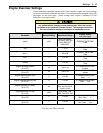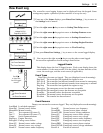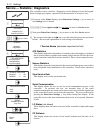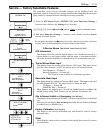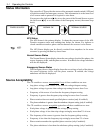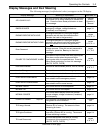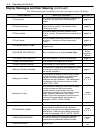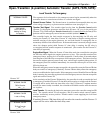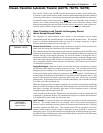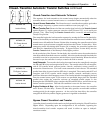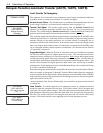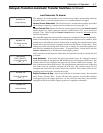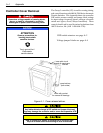
4--1Description of Operation
Open–Transition (2–position) Automatic Transfer (4ATS,7ATS,7ATB)
Load Transfer To Emergency
The sequence for load transfer to the emergency source begins automatically when the
controller detects a normal source failure or a transfer test signal.
Normal Source Failure. The Normal source is considered unacceptable when any one
of six voltage, frequency, or phase rotation conditions occur (see page 3–1).
Transfer Test Signal. Test transfer signal can be from the Tr an sfe r Contr ol switch
(Feature 5), the engine–generator exerciser clock (Feature 11C), or via the serial port
(Feature 72A). When using the Tr an sfe r Con tro l switch,itmustbeheld
in the TransferTest
position until the emergency source becomes available (within 15 seconds).
The controller begins the load transfer sequence by de–ene rgi zing the SE relay and
starting the Feature 1C time delay. Feature 1C time delay on engine starting prevents
nuisance starting of t he engine–generator set and load transfer to emergency due to
momentary failures of the normal source. If the normal source is restored (voltage returns
above t he dropout point) while Feature 1C time delay is running, the SE relay is
re–energized and the transfer sequence is terminated. (For transfer test the Feature 1C
time delay is bypassed.)
Engine Start Signal. When the Feature 1C time delay ends, the controller de–energizes
the NR relay which signals the engine–generator to start . The controller monitors the
emergency source, waiting for it to become acceptable. Usually about 10 seconds elapse
from dropout of the NR relay to acceptance of the emergency source. This interval occurs
because the engine–generator must crank, start, and run up to nominal pickup points. If
the emergency source is available immediately, the controller will accept it as soon as the
NR relay drops out.
When the emergency source becomes acceptable, the controller starts the F eature 2B time
delay on transfer to emergency (if desired). Feature 2B time delay allows the emergency
source tostabilizebeforeload transfer. If theemergency source fails while Feature 2B time
delay is running, the controller again waits for the emergency source to become acceptable
again and restarts Feature 2B.
At the conclusion of the Feature 2B time delay, the controller is ready to transfer the load
to emergency. If enabled, Feature 31F time delay will run prior to transfer and the Feature
31 output will be active while the time delay runs. Also, if Feature 27 inphase monitor
control (for motor loads) is enabled, the controller will inhibit transfer until the sources
are in phase.
Load Transfer. To transfer the load to the emergency source the controller energizes ER
relay. The transfer switch TS coil energizes, and all transfer switch conta cts (mains,
controls, auxiliaries) reverse position. Transfer swi tch is now supplying the load from
emergency source.
If enabled, Feature 31M time delay will run after the transfer and the Feature 31
output will be ac tive while the time delay runs.
NORMAL FAILED
TEST MODE
TEST CIRCUIT 5
Waiting for Emerg
Acceptable
NORMAL FAILED
Load on Emerg
NORMAL FAILED
TD PostTransfer
__ min, __ s
NORMAL FAILED
TD PreTransfer
__ min, __ s
Feature 31F
Feature 31M



